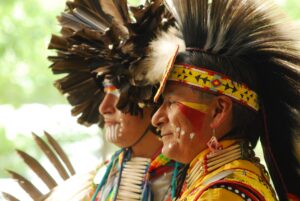Motion dismissed. The Province opposed the admission of an archaeologist’s report on culturally modified trees in an underlying Aboriginal title claim. It raised issues of bias or impartiality, novel approach, qualifications and necessity of the opinion. The report reached the threshold of requirement of admissibility.
Mr. Earnshaw, an archaeologist, was asked to address the following by plaintiff’s counsel in an underlying Aboriginal title claim: 1) perform reconnaissance surveys within the Nuchatlaht claim area to understand the condition of recorded Culturally Modified Trees [“CMT”] sites as well as search out and record other previously unrecorded archaeological sites; 2) prepare written reports outlining findings; and 3) prepare a written expert report that includes the extent of archaeological research into the claim area, and what the archaeological record shows concerning the use and occupation of the claim area.
Mr. Earnshaw defined CMTs as archaeological features that refer to any tree with modifications related to the cultural use of the forest by Indigenous people. He testified he was impartial with respect to his opinion (White Burgess Langille Inman v Abbott and Haliburton Co, 2015 SCC 23). Experts are experts because they focus on a particular area. They may even express an opinion or theory in their writings, for example, that the less tread there is in a tire the tire more susceptible it is to hydroplaning. That does not mean that their evidence within that area should not be admitted.
Novel theory must be scrutinised at the admissibility stage (R v Bingley, 2017 SCC 12; R v J-L-J, 2000 SCC 51). However, the closer the opinion gets to the ultimate issue, the greater the scrutiny (R v Mohan, [1994] 2 SCR 9). Here the opinion does not approach the ultimate issue. The basis for Mr. Earnshaw’s opinion is not completely untested as it was contained in his thesis and one peer-reviewed article, and he has acknowledged the limits of the report. For example, he said he could not determine which groups were responsible for creating the archaeological sites. This is not a scientific report with formulas and calculations that makes it impossible for the Court to assess.
Mr. Earnshaw completed his master’s thesis on CMT studies on the Northwest Coast and is working on multiple archeology sites in BC, including several along the coast. He might not be a senior person in his field, but he meets the threshold requirement for admissibility (R v Marquard, [1993] 2 SCR 223). Mr. Earnshaw’s report may not give the near-conclusive evidence needed for the plaintiffs but nevertheless it is not irrelevant. The overall question of whether the pitfalls of admitting the report outweigh its usefulness, the Court concludes the report ought to be admitted.


